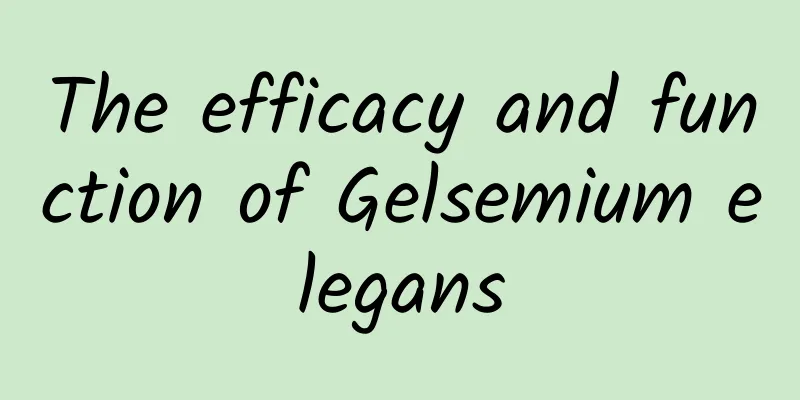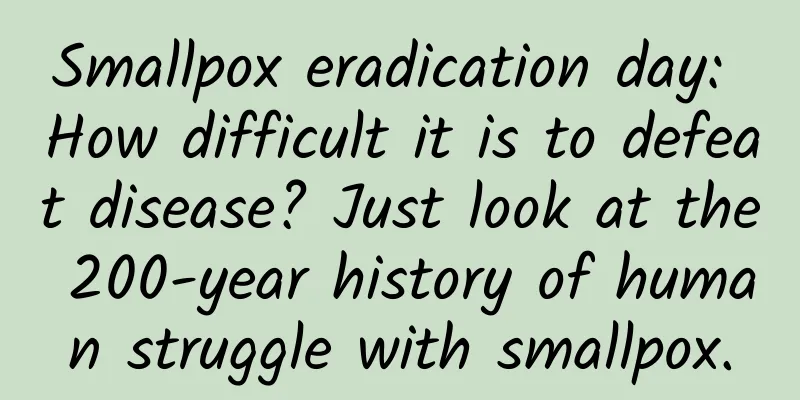The efficacy and function of Gelsemium elegans

|
Do you know Gelsemium elegans? It is a common Chinese medicinal material and is very helpful for some diseases. Let me show you today. [Other names] Pueraria lobata (Ben Jing), Qin Gelsemium, Poisonous Root (Wu Pu's Materia Medica), Ye Ge, Hu Mancao (Southern Plant Description), Huang Ye Ge (Qian Jin Fang), Chu Xin (Shu Materia Medica), Wen Mang, Gelsemium elegans (Mengxi Bitan), Huang Teng, Rotten Intestines Grass (Compendium of Materia Medica), Chaoyang Grass (Essentials of Raw Herbal Medicine), Big Tea Medicine, Tiger Wolf Grass (Lingnan Herbal Medicine Collection), Suo Ge Grass (Fujian Folk Herbal Medicine), Yellow Flowered Kuwanteng (Guangxi Medicinal Plant Atlas), Yellow Mengcai (Guangxi Chinese Materia Medica), Big Tea Vine, Big Cannon Leaf (Chinese Medicinal Plant Atlas), Kuwan Gong, Heban Medicine (Lingnan Herbal Medicine), Cold Vine, Big Tea Leaves, Garcinia (Guangxi Medicinal Plant List), Big Chicken Kuwanteng, Sheep Band Gui, Suoju (Main Poisonous Plants in the South). [Source] It is the whole herb of the Loganaceae plant. Available all year round. 【Original form】 Evergreen vine with smooth branches. Leaves are opposite, ovate-oblong to ovate-lanceolate, 7-12 cm long, 2-5.5 cm wide, acuminate at apex, cuneate or nearly rounded at base, entire; petiole 1.2 cm long. Cymes are trifurcated and terminal or axillary; flowers are small and yellow; bracts are 2, small and narrow; sepals are 5, separate, about 3 mm long; corolla is funnel-shaped, 5-lobed at the apex, 1-1.6 cm long, with lighter red spots inside, lobes are ovate, pointed at the apex, shorter than the tube; stamens are 5; ovary is superior, 2-chambered, style is filiform, stigma is 4-lobed. The capsule is ovate-elliptical, 10-14 mm long, 6-8 mm in diameter, and split into two 2-lobed lobes. Seeds numerous, winged. Flowering period is from August to November. The fruiting period is from December to February of the following year. [Habitat distribution] It grows on sunny hillsides, in grass or bushes on the roadside. Distributed in Zhejiang, Fujian, Guangdong, Guangxi, Guizhou and Yunnan. [Chemical composition] The roots, stems and leaves contain the bioalkalis gelsedimentin, chloranthene, chloranthene, chloranthene, chloranthene and chloranthene. Among them, gelsedimentin has the highest content. Gelsemium chinense is highly toxic and is the most important active ingredient. It is also reported that the roots of Gelsemium produced in Fujian contain Gelsemium elegans A, Z, M, D and E; the roots of Gelsemium produced in Guangdong contain Gelsemium elegans A, Z, M, D and E. [Pharmacological action] The root, stem and leaves are all highly toxic. In the 1930s, Chinese scholars conducted relatively detailed research on the chemistry and pharmacology of major tea herbs and North American major tea herbs. The main toxic components of Gelsemium elegans are Gelsemium foetidum, Gelsemium yin, Gelsemium foetidum, etc. Its properties of action are similar to those of the bioalkalis colsemitin A and colsemitin B contained in North American Gelsemium elegans, but its toxicity is slightly weaker. The minimum lethal dose of colsemitin A to rabbits is 0.8 mg/kg. The main symptom of poisoning is respiratory paralysis. In mild cases, there is difficulty breathing, and in severe cases, there is death from respiratory arrest. After a lethal dose of colsemitin B causes the animal's breathing to stop, the heart continues to beat. The respiratory depression is not central. Decerebrate or vagus nerve severance does not affect the respiratory depression caused by colsemitin B. Ephedrine and picrotoxin also have no significant rescue effect. On the other hand, there is no direct paralyzing effect on the peripheral neuromuscular apparatus. Gelsemide B can inhibit and stop the rhythmic contraction of the isolated diaphragm with nerves connected, which is the same effect as the diaphragm in situ. Direct stimulation of the phrenic nerve after breathing has stopped can still cause the diaphragm to contract. In addition, after animals are poisoned, they all show drooping eyelids, drooping heads, weak legs, and weak muscles all over the body, so it is speculated that its effect is paralysis of the motor neurons in the spinal cord. [Toxicity] This product is highly toxic, and its roots and leaves (especially young leaves) are the most toxic. If ingested by mistake, it can easily cause poisoning or even death. The main manifestations of poisoning are: ① Neuromuscular symptoms: dizziness, slurred speech, muscle relaxation and weakness, difficulty swallowing, peripheral nerve paralysis of respiratory muscles, ataxia, coma, etc.; ② Eye symptoms: diplopia, decreased vision, ptosis, dilated pupils, etc.; ③ Digestive system symptoms: burning pain in the mouth and throat, nausea, vomiting, abdominal pain, diarrhea, constipation, abdominal distension, etc.; ④ Circulatory and respiratory symptoms: slow heartbeat in the early stage, faster heartbeat later, difficulty breathing, respiratory paralysis, collapse, etc. How quickly symptoms appear is related to how the medicine is taken. If the roots are boiled in water or fresh shoots are taken, symptoms usually appear immediately. If the roots are taken, symptoms appear more slowly, sometimes taking 2 hours. Rescue methods: gastric lavage, vomiting, catharsis, infusion and symptomatic treatment. Chinese medicine can be taken orally with Sanhuang Decoction (Scutellaria baicalensis, Coptis chinensis, Phellodendron amurense, and Licorice), Ipomoea aquatica juice or Centella asiatica mashed and mixed with tea oil, Honeysuckle leaves and mashed juice mixed with brown sugar, Gardenia jasminoides (Rubiaceae) plus Imperata rhizome boiled in water and taken orally. According to folk experience, fresh sheep's blood can be administered while hot for rescue, and it has been clinically proven to be effective. 【Nature and flavor】 Bitter, warm, poisonous. 【Functions and indications】Dispel wind, attack toxins, reduce swelling and relieve pain. Treat scabies, eczema, scrofula, carbuncle, furuncle, bruises, rheumatism, and neuralgia. [Usage and Dosage] For external use: mash and apply or grind into powder for application; decoct in water for washing or use for fumigation. 【Note】 This product is highly toxic and is for external use only. Do not take it orally. [Additional prescription] ① For treating scabies: 2 qian each of Gelsemium elegans, Angelica dahurica, Indigo naturalis, Gallnut, Alum, Semen Codonopsis pilosula, and Herba Cynanchifoliae, 4 fen of Plum slices, 1.5 qian each of Rosin and Realgar. Grind them into fine powder, melt it with wax and mix it with ointment to apply. (Lingnan Herbal Medicine) 【Excerpt】 《*Dictionary》 [Source] From "Shennong's Herbal Classic". From the above explanation, we have some understanding of the effects and functions of Gelsemium elegans. If any discomfort occurs in the body, it can be treated with Chinese medicine. Chinese medicine has a long history of treating diseases, so it can be consumed with confidence. |
<<: The efficacy and function of white sandalwood root
>>: The efficacy and function of white charcoal
Recommend
New track in space: What exactly is satellite communication in the 6G era?
Recently, Huawei and Apple have launched satellit...
How to make a good toilet paper that won’t clog the toilet and isn’t easily torn?
You probably use up to 50% of the toilet paper in...
When I woke up, my Henan accent changed to a Northeastern accent. This disease is so socially destructive.
Recently, an overseas student blogger named "...
The efficacy and function of Lijiang Angelica dahurica
Lijiang Duhuo is a common medicinal material in t...
She is rooted in isotope geochemistry and is determined to explore habitable planets outside the earth!
In the vast universe, various elements are consta...
Technology opens up the world of perception: What happens when the senses are "digitalized"?
According to Buddhist theory, people have six sen...
The efficacy, effects and edible methods of Ligustrum lucidum
There are many types of medicines. When choosing ...
The efficacy and function of canna root
Do you know what canna root is? If you know, do y...
The formaldehyde test passed, so why does my house still smell bad?
In the background, we often receive messages from...
Can Yunnan Baiyao powder be applied externally?
Yunnan Baiyao powder is a blood-activating, pain-...
The more you sleep, the smarter you are? Sleeping more than this may be more harmful to your health than staying up late
About one-third of a person's life is spent s...
Ancient beverages are also becoming trendy? When tea starts to become instant
With its convenience, versatility and applicabili...
After Chinese medicine enema, all the stool came out
Chinese medicine enema is to directly inject the ...
The VT-2 tank was successfully exported and became the latest equipment of the Tanzanian Army. It will be used on the African continent
On December 9, 2021, Tanzania held a grand ceremo...
Is it best not to come into contact with patients who have undergone chemotherapy? Can chemotherapy drugs be transmitted to people around you?
Rumor: "It is best not to contact patients w...









